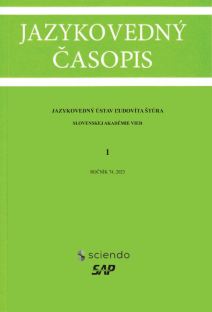The Effect of (Historical) Language Variation on the East Slavic Lects Lemmatisers Performance
The Effect of (Historical) Language Variation on the East Slavic Lects Lemmatisers Performance
Author(s): Ilia Afanasev, Olga Lyashevskaya, Stefan Rebrikov, Yana Shishkina, Igor Trofimov, Natalia VlasovaSubject(s): Language studies, Language and Literature Studies, Theoretical Linguistics, Applied Linguistics, Historical Linguistics, Eastern Slavic Languages
Published by: SAV - Slovenská akadémia vied - Jazykovedný ústav Ľudovíta Štúra Slovenskej akadémie vied
Keywords: East Slavic; language variation; lemmatisation; dialectology; historical linguistics; historical NLP
Summary/Abstract: The need to develop tools for historical and regional variations is becoming more urgent in natural language processing. In this paper, we present two candidate systems for lemmatising historical East Slavic lects (Late Old East Slavic and Middle Russian), as well as modern regional East Slavic lects (Belogornoje and Megra): BERT-based end-to-end pipeline with language-specific heuristics and sequence-to-sequence BART-based encoder-decoder. To evaluate their predictions, we use accuracy score and string similarity measures, such as Levenshtein distance. The BERT-based model is more suitable for the regional data, achieving 85% accuracy score, and only 74% on the historical data. BART-based model climbs up to 92.6% accuracy score on the historical data, yet gets only 80% on the regional data. We provide an error analysis and discuss ways to enhance models, such as dictionary lookup and spellchecker.
Journal: Jazykovedný časopis
- Issue Year: 74/2023
- Issue No: 1
- Page Range: 225-233
- Page Count: 9
- Language: English

